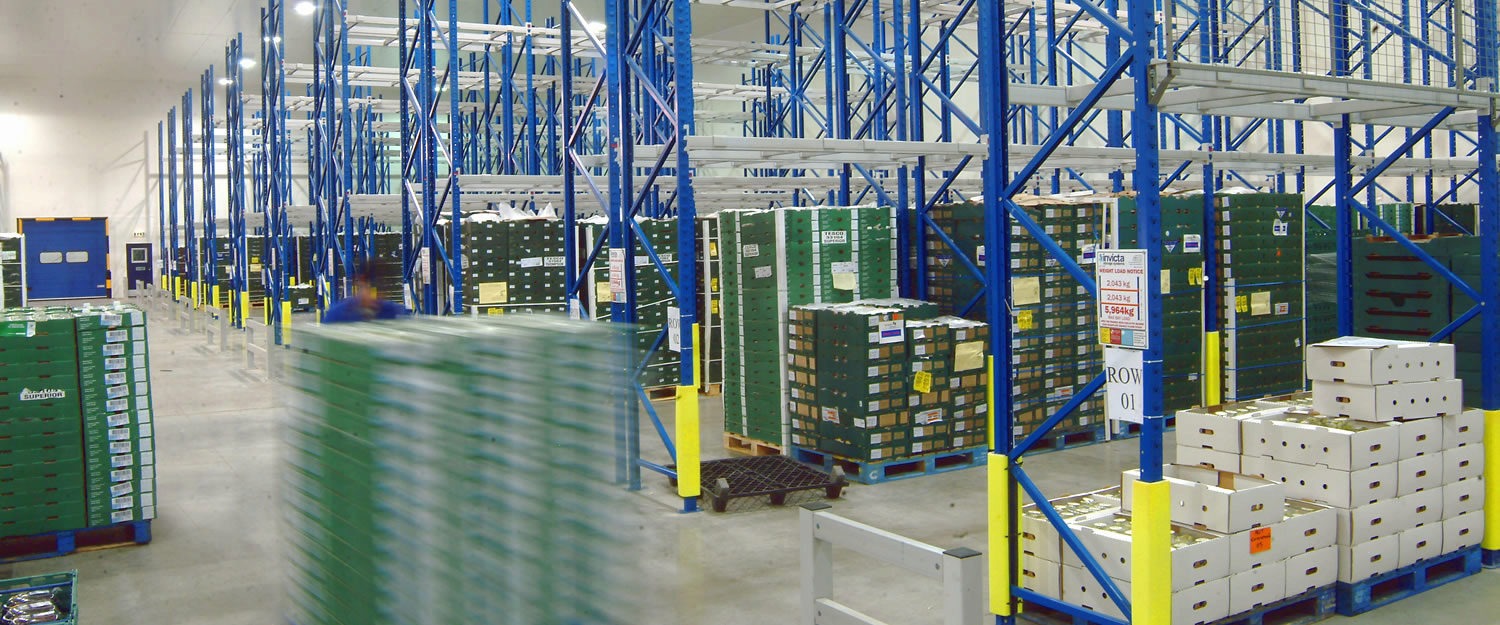For your information
You are being redirected to one of our divisional subsites which contains more detailed information on the required division. To navigate back to the main Invicta Group site, please click the link found in the footer at the bottom of the page.
How smart warehousing aims to revolutionise storage
12th July 2022
Work smart, not hard
Quick Quote
Contact Mick Coyne
To get a quotation or arrange a free site survey - Call Mick Coyne on
-
 UK
UK
Current location:
Quick Quote
Contact Mick Coyne
-
 UK
UK
Current location:
Having existed as a concept for a solid decade now, the next industrial revolution – dubbed ‘Industry 4.0’ – is yet to kick into gear. While businesses have begun to modernise with affordable technologies such as smaller and more manoeuvrable forklifts, these changes have been modest by the standards of a ‘revolution’, and don’t represent a culture change so much as incremental improvements.
The feeling is that there has to be a tipping point, something which drives businesses to adopt new technologies en masse, or risk being left behind. Sometimes this is a sudden fall in price and rise in availability of technology; other times, it’s the successful adoption of technology by a series of major rivals. In this case, it could be a whole host of factors – from political to geographical to the changing demands of consumers.
An unstable age
The first – and most obvious – is the coronavirus pandemic. As much as many businesses have had to rein things in to survive, there’s also been a demand to innovate. Adapting in order to survive this period has meant fast adoption of technologies such as Zoom to facilitate home working, and a serious rethink of the physical dynamics of workplaces. This has left many businesses more agile than before, and more open to substantive changes.
The second great shift arising from COVID-19 is the rising popularity of online shopping. Already a major threat to physical retail, online shopping has exploded as the high streets have been shut, and the genie isn’t likely to go back in the bottle. Businesses in online commerce and logistics are having to expand to meet demand, make their throughput of goods more efficient, and find ways to ship products faster than ever to meet the expectations created by Amazon.
The third is the changing geographical and political climate around the world. This is most prominent in the UK, where Brexit has forced a total rethink of how goods are transported and stored, due to the imposition of levies and delays in continental shipping. But this also applies in an increasingly turbulent world, where businesses have to bear the brunt of sudden embargoes and freak weather events, and where competition is growing exponentially.
The dawn of Industry 4.0
These are threats that existing storage and logistics simply isn’t in a position to deal with. While there are certainly improvements that can be made to storage systems – such as new varieties of high density pallet racking – and logistics processes, the human factor is still a fundamental barrier. While warehouses will always need workers, there are hard limitations that robots simply don’t have. An automated warehouse could feasibly run with minimal oversight, using robots that could find things instantly, transport pallets and pick items – all without taking a break.
This is the future that is envisaged in Industry 4.0: the dawn of the smart warehouse. While you may be familiar with the concept of the warehouse management system, or WMS, Industry 4.0 supercharges it. Everything from the delivery vehicles to production lines to warehouse robots could be interlinked and automated, creating near-zero delays between items rolling out of the factory, into storage and off to distributors. Delivery robots could even trundle out of small local depots or from controlling vans, and replace the role of the courier.
This is perhaps the point at which Industry 4.0 starts to sound like science fiction. But the present day reality is much closer to those ideas than you might think. Robotics has advanced significantly in the last few years, with robots now being built to handle even small and delicate items. Delivery robots have been tested in the US, while Amazon UK has been field testing drone delivery for four years. Crucially, the notion of a smart warehouse is perhaps the easiest to implement – and something many businesses could do right now.
Smarter, better, faster
The smart warehouse is fundamental to Industry 4.0, but it’s also not as complicated as it seems. The idea is twofold: that the amount of storage space is maximised, and that the storage can be accessed as quickly as possible. The best way to achieve this is by investing in high density narrow aisle or double-deep racking, deploying robots or appropriate vehicles to interact with it, and deploying an inventory management system that automates the administrative part of the storage process.
It’s possible that you’re doing one of these already. As mentioned previously, a WMS is an increasingly common tool for managing stock, whether that’s using advanced sensors or QR codes that can be scanned by warehouse operatives. Deep, tall and narrow-aisle racking meanwhile have long been options for businesses, and something that could be easily adapted to support warehouse robots or autonomous vehicles. The real trick is in marrying these things together, and streamlining how they interact with one another.
If you use a modern WMS, you may already have the capability to integrate various new technologies with it, including the use of sensors for stock detection and monitoring, or the use of robotics. If you already have a high density racking format such as narrow-aisle racking, you might look at robots or an AS/RS system to transport and fetch goods. And if you already have some form of robotics or autonomous vehicles, you should be looking to adapt your warehouse to suit them – allowing them to collect and utilise as much data as possible.
—
The cities and buildings of the future are all trending towards automation, with sensors creating a vast array of data to be interpreted and applied. What’s exciting is that many warehouse operators today are closer to that future than they think. By taking steps to upgrade your WMS, adapt your racking or introduce robots to your storage space, you could create entirely new efficiencies within your business – and take a step towards a truly smart warehouse.
Accreditations & Affiliations







Start your project
Tell us about your project. Please complete this form. One of our sales team will come back to you with more details. If you prefer, you can drop us an email.




Share/Like this page